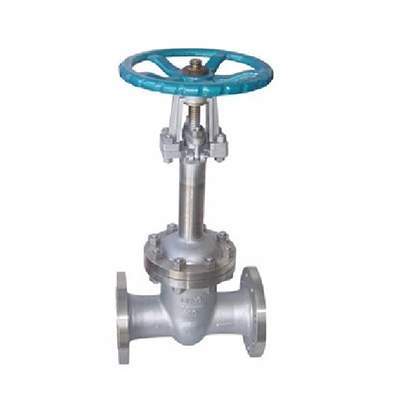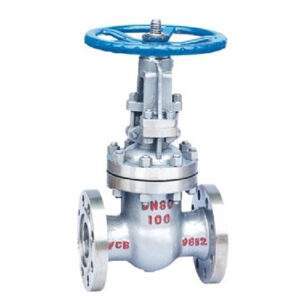Introduction

When it comes to controlling the flow of fluids in various systems, gate valves are a reliable and widely used solution. However, with a myriad of options available on the market, selecting the right cheap gate valve can be a daunting task. This comprehensive buyer’s guide aims to assist you in making an informed decision by providing valuable insights into the key factors to consider, the different types of gate valves, and tips for installation and maintenance.
Understanding Gate Valves: A Brief Overview
A gate valve is a linear-motion valve that operates by lifting a gate or wedge out of the fluid flow path. When fully open, the gate is nearly in line with the pipeline, offering minimal resistance to fluid flow. Gate valves are primarily used for on-off applications, making them ideal for controlling the start and stop of fluid flow.
Why Choose a Cheap Gate Valve?
There are several compelling reasons to consider a cheap gate valve for your specific needs:
- Cost-Effectiveness: Perhaps the most obvious advantage is the significant cost savings associated with cheap gate valves. By opting for a budget-friendly solution, you can reduce overall project expenses without compromising on quality or performance.
- Simple Design: Gate valves are renowned for their straightforward design, which simplifies installation, maintenance, and troubleshooting processes. This simplicity translates to reduced labor costs and downtime.
- Versatility: Gate valves are remarkably versatile and can be employed in a wide range of industries, including water treatment, oil and gas, chemical processing, and more. Their adaptability to various applications makes them a popular choice for diverse fluid control needs.
Key Factors to Consider When Buying a Cheap Gate Valve
When selecting a cheap gate valve, it’s imperative to carefully consider the following factors to ensure optimal performance and longevity:
- Material: The choice of material significantly impacts the valve’s durability, corrosion resistance, and suitability for specific fluid types. Common materials include cast iron, ductile iron, stainless steel, and bronze.
- Size: The valve’s size must be compatible with the pipeline diameter to avoid restrictions or leaks. It’s essential to accurately measure the pipeline dimensions to select the appropriate valve size.
- Pressure Rating: The pressure rating indicates the maximum pressure the valve can withstand without compromising its integrity. It’s crucial to select a valve with a pressure rating that exceeds the anticipated operating pressure in your system.
- Temperature Rating: The temperature rating specifies the temperature range within which the valve can operate safely. Exceeding the temperature rating can lead to material degradation and potential valve failure.
- End Connections: Gate valves are available with various end connections, such as threaded, flanged, or socket weld. The choice of end connection depends on the piping system and installation requirements.
- Operating Mechanism: Gate valves can be manually operated using a handwheel or lever, or they can be equipped with a gear operator or actuator for remote control. The choice of operating mechanism depends on factors like accessibility, frequency of operation, and automation needs.
Types of Cheap Gate Valves
Different types of cheap gate valves cater to specific applications and offer unique advantages:
- Wedge Gate Valves: These valves feature a wedge-shaped gate that is lifted to open the valve. They are commonly used in general-purpose applications and offer reliable performance.
- Parallel Gate Valves: In parallel gate valves, the gate is parallel to the pipeline when fully open, minimizing flow resistance. They are often used in high-pressure applications where low pressure drop is crucial.
- Knife Gate Valves: Designed for handling abrasive and slurry fluids, knife gate valves have a knife-shaped gate that slices through the fluid, minimizing wear and tear.
Where to Buy Cheap Gate Valves
You can procure cheap gate valves from various sources, including:
- Online Retailers: Many online retailers offer a wide range of gate valves at competitive prices, allowing you to compare options and make informed purchases.
- Local Hardware Stores: Your local hardware store may carry a limited selection of gate valves, especially for residential or small-scale applications.
- Industrial Supply Distributors: Industrial supply distributors specialize in providing industrial equipment, including valves, and can offer a broader range of options and technical expertise.
How to Install a Cheap Gate Valve
Installing a gate valve is a relatively straightforward process, but it’s essential to follow the manufacturer’s instructions carefully to ensure proper installation 1 and optimal performance. Key steps in the installation process include:
- Prepare the Pipeline: Clean and deburr the pipe ends to remove any debris or sharp edges that could damage the valve or gasket.
- Align the Valve: Position the valve correctly on the pipeline, ensuring proper alignment and orientation.
- Apply Pipe Joint Compound (if necessary): If required, apply a suitable pipe joint compound to the gasket to enhance sealing.
- Tighten the Bolts: Tighten the bolts or nuts securing the valve to the pipeline in a crisscross pattern to ensure even tightening and avoid leaks.
- Test for Leaks: After installation, conduct a pressure test to identify and rectify any leaks.
Maintaining Your Cheap Gate Valve
Regular maintenance is essential to prolong the life of your gate valve and ensure its reliable operation. Key maintenance practices include:
- Visual Inspection: Periodically inspect the valve for signs of wear, corrosion, or damage.
- Lubrication: Lubricate the valve stem and packing gland to reduce friction and prevent seizing.
- Cleaning: Clean the valve body and internals to remove any debris or buildup that could impede operation.
- Functional Testing: Regularly test the valve’s operation to ensure smooth opening and closing.
Comparison of Common Gate Valve Materials

| Material | Advantages | Disadvantages | Applications |
|---|---|---|---|
| Cast iron | Durable, affordable | Susceptible to corrosion | Water, wastewater |
| Ductile iron | Strong, corrosion-resistant | More expensive than cast iron | Water, wastewater, oil and gas |
| Stainless steel | Corrosion-resistant, high temperature rating | Expensive | Chemical processing, food and beverage |
| Bronze | Corrosion-resistant, durable | Expensive | Marine applications |
Conclusion
By carefully considering the factors discussed in this guide and following best practices for installation and maintenance, you can select and install a cheap gate valve that meets your specific needs and provides reliable service for years to come.
FAQ
What is the difference between a gate valve and a ball valve?
A gate valve controls flow by lifting a gate, while a ball valve controls flow by rotating a ball. Gate valves are better for on/off applications, while ball valves are better for both on/off and throttling.
How do I choose the right size gate valve for my application?
The size of the gate valve should match the nominal pipe size (NPS) of the pipeline. It’s crucial to select the correct size to ensure proper flow and prevent pressure drops.
Can I use a gate valve for throttling?
While gate valves are primarily designed for on/off applications, they can be used for limited throttling. However, excessive throttling can lead to increased wear and reduced valve lifespan.
How often should I lubricate my gate valve?
The frequency of lubrication depends on factors like operating conditions, environmental factors, and valve material. As a general rule, it’s recommended to lubricate the valve stem and packing gland at least once a year.
What is the difference between a wedge gate valve and a parallel gate valve?
In a wedge gate valve, the gate is wedge-shaped and can be either solid or split. In a parallel slide gate valve, the gate slides parallel to the pipeline when opening and closing. Wedge gate valves are more common and offer better sealing, while parallel slide gate valves are more suitable for high-pressure applications.
